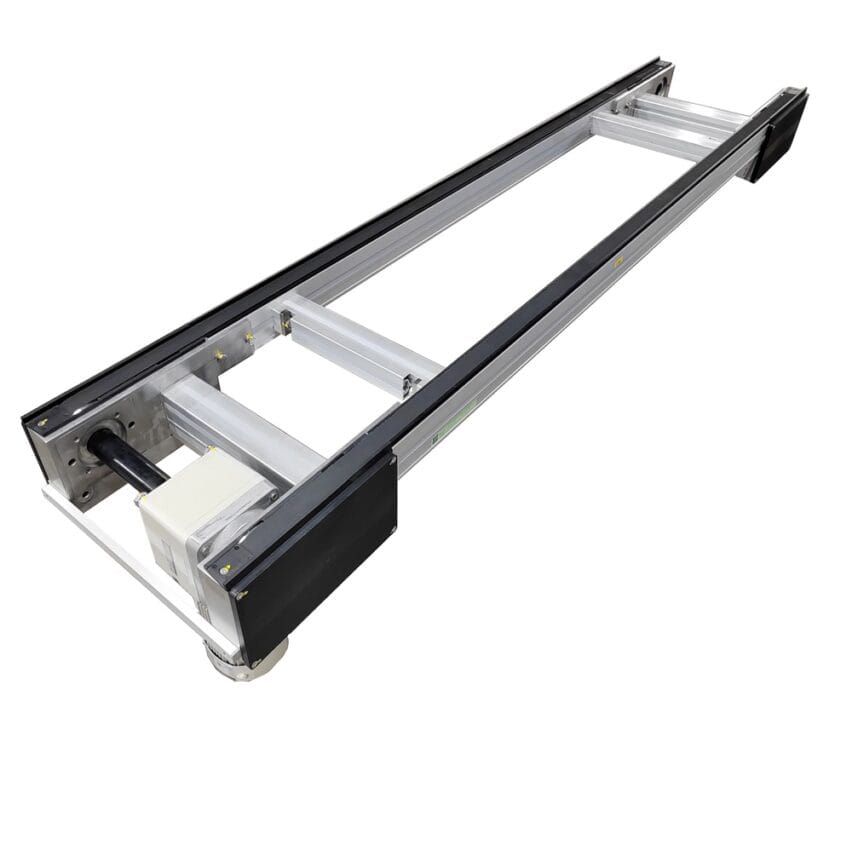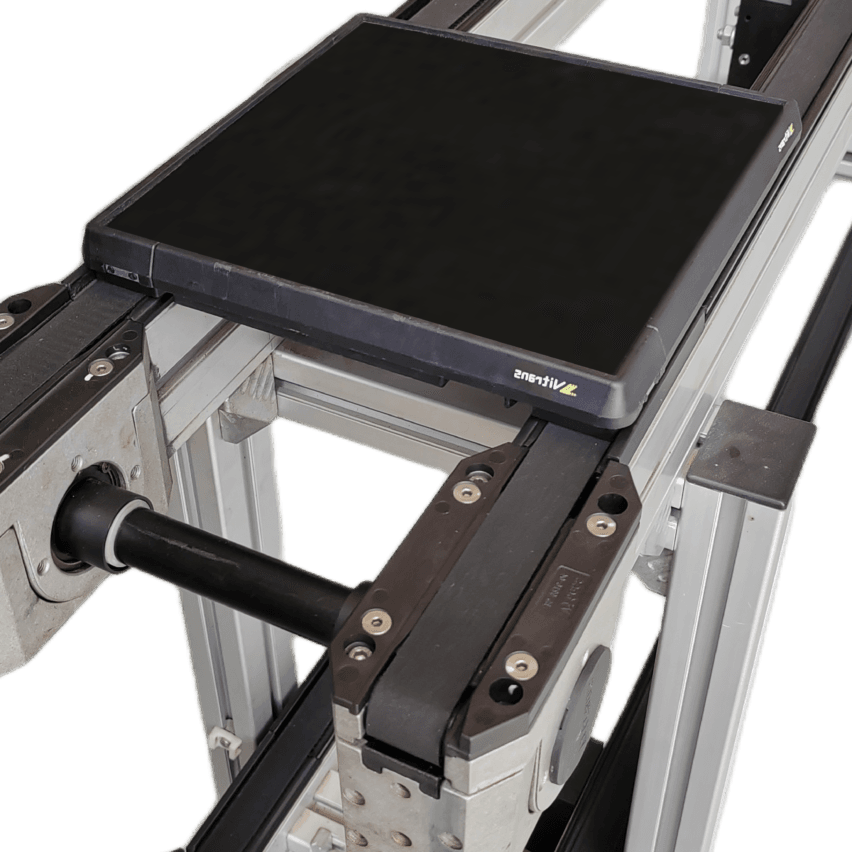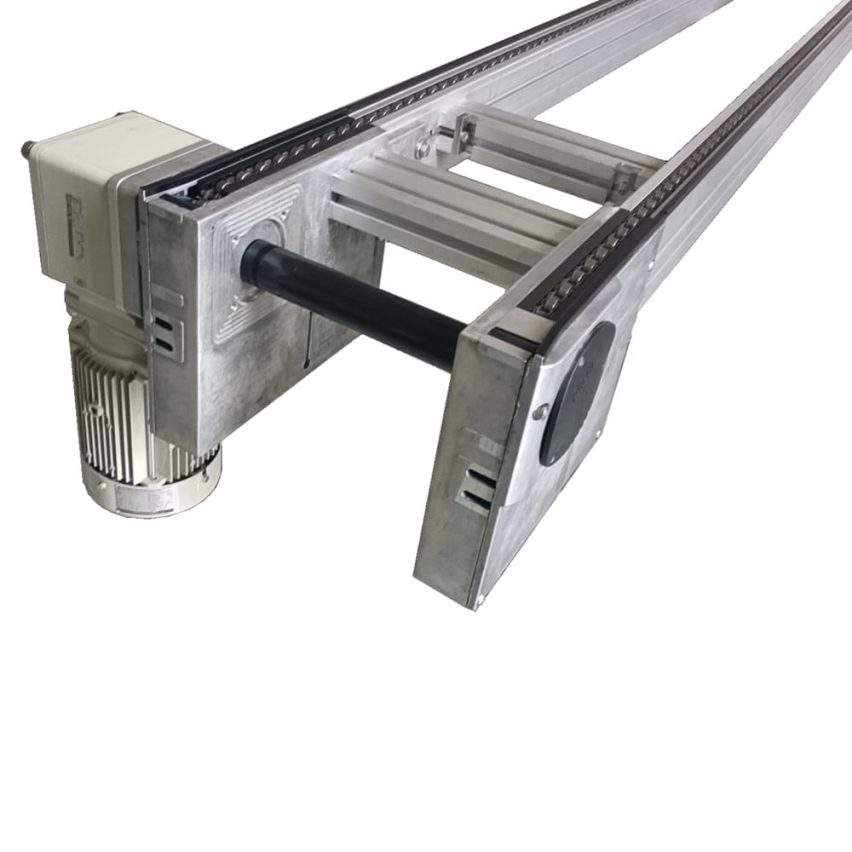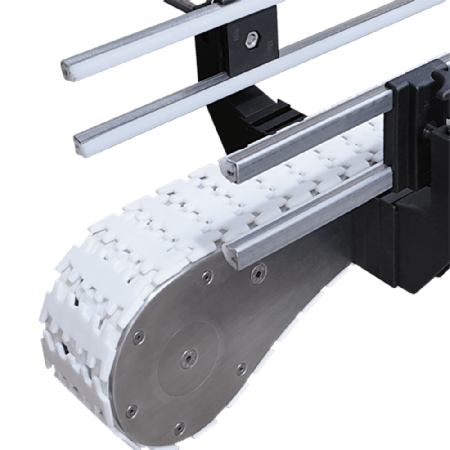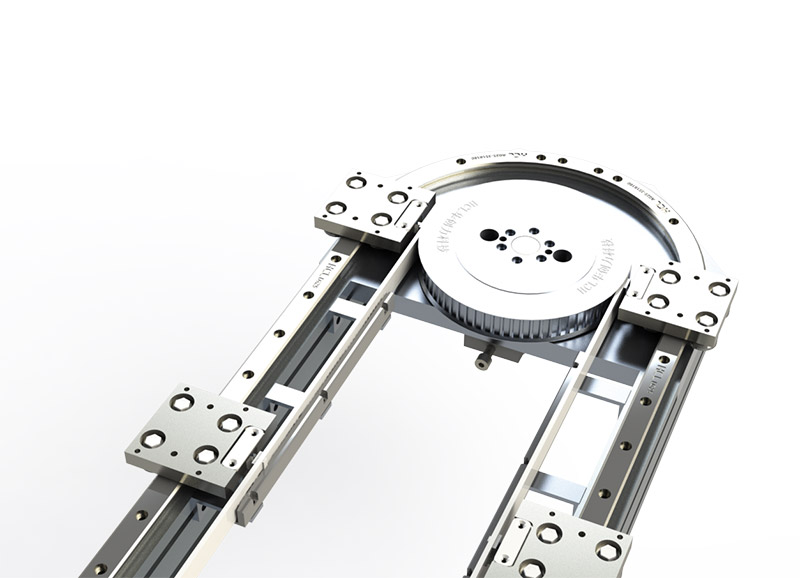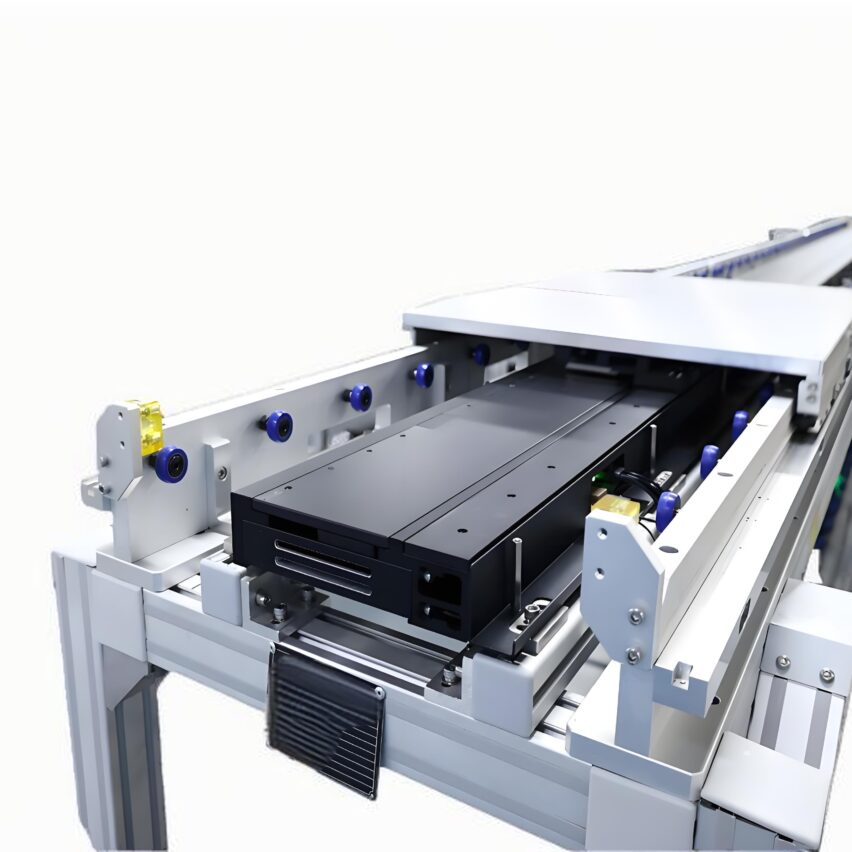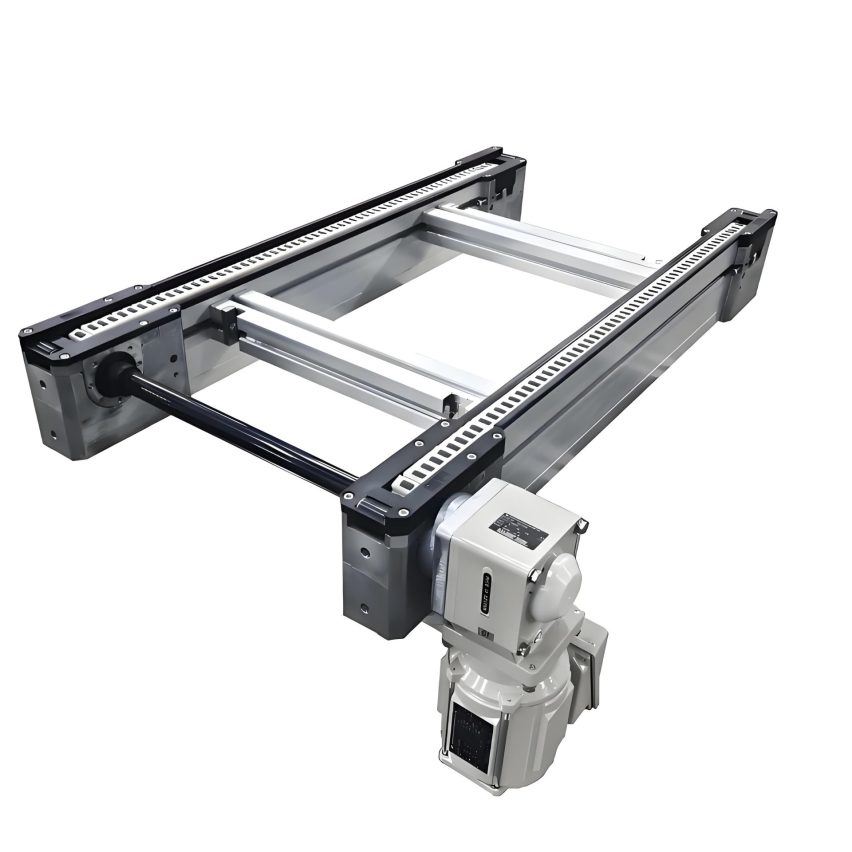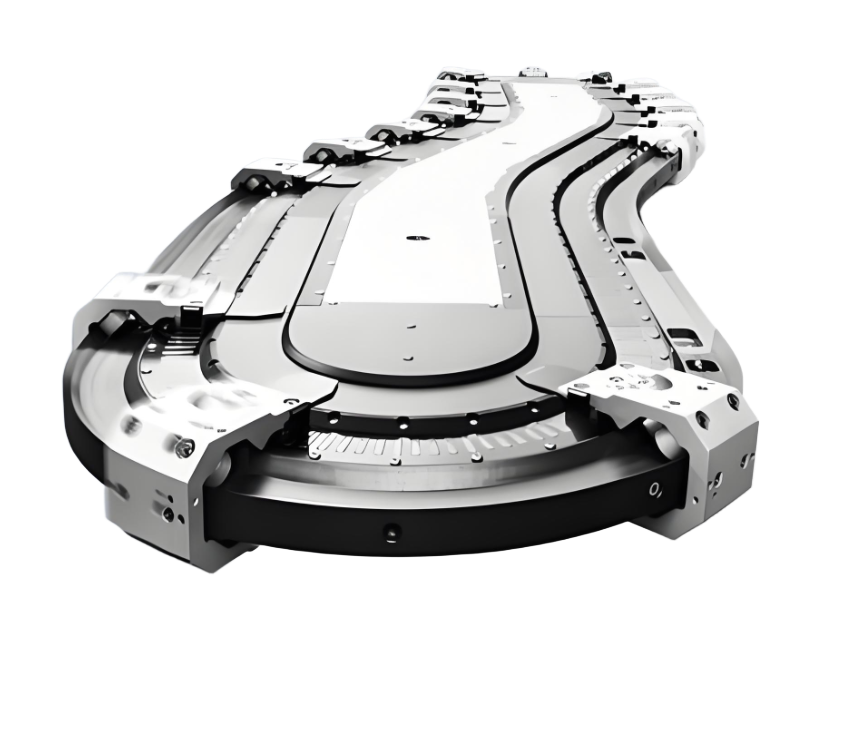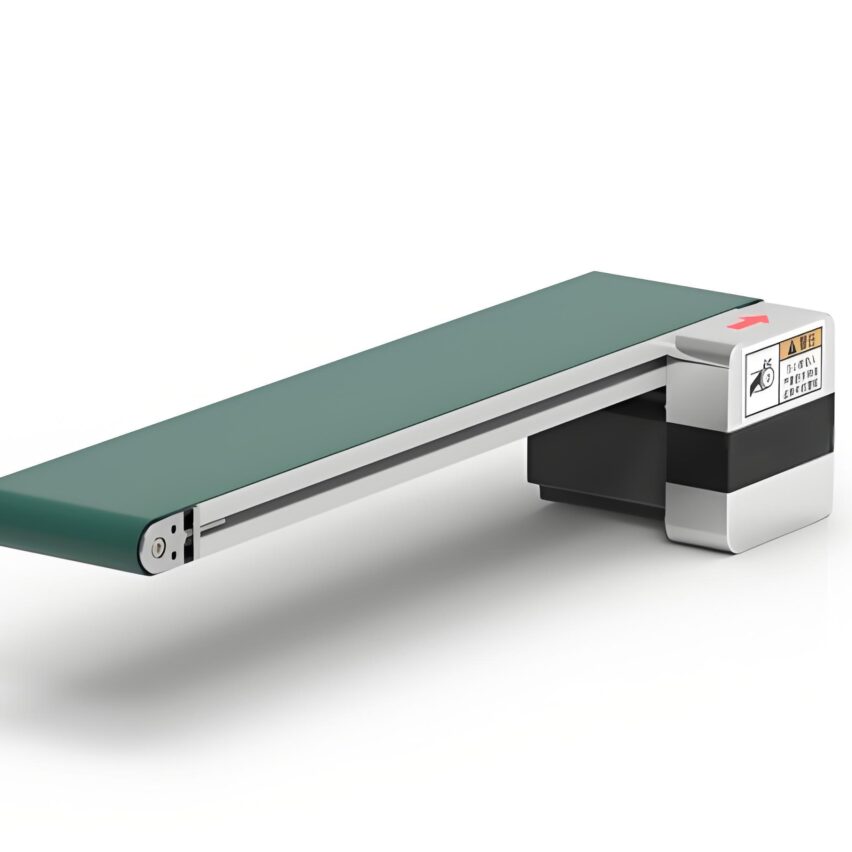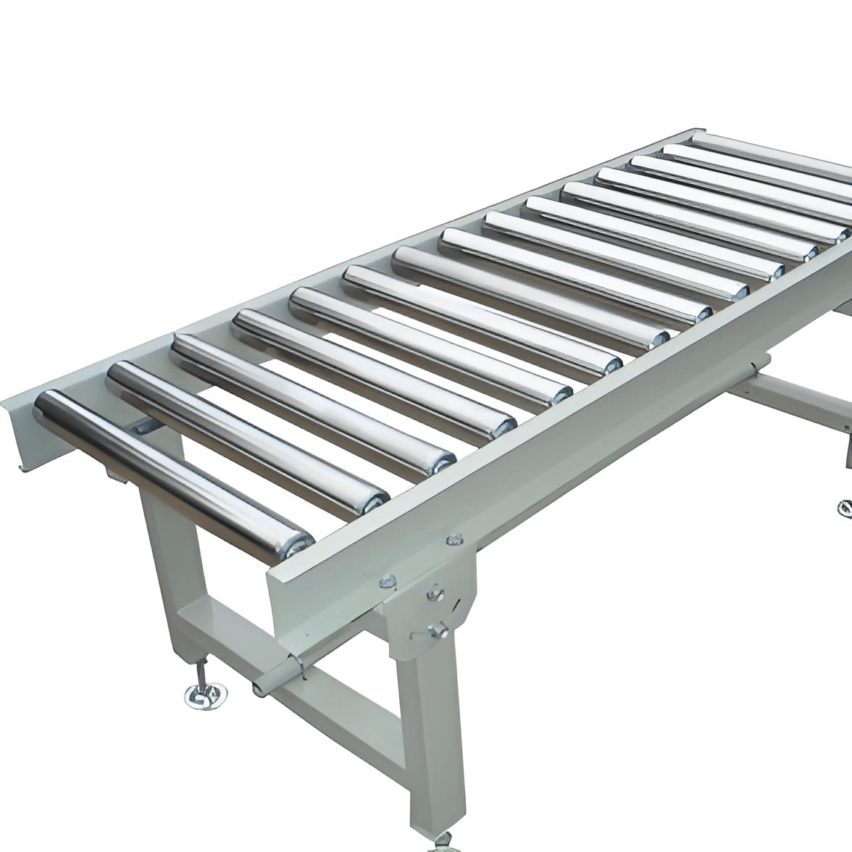Automotive parts assembly line, why some equipment can be as long as the eyes, screw the screws accurately into the 0.1 mm hole? And some production lines dry to the afternoon began to "hand shake"?Automotive turbocharger blades that won't fit with a 0.1mm differencepeaceDoor hinge holes that don't line up.--These headaches, in fact, are stuck in the "conveyor line precision" on this Kan. Today we will talk about those auto parts factories in Qingpu are using the hydrostatic guide rail conveying line, see what it has the ability to solve these "millimetre troubles".
First, what is a hydrostatic guide? Simply put, it's "held together by oil."
Imagine this: two iron plates rubbing back and forth hard against each other, and they're bound to get stuck over time. But the hydrostatic guide is smart - it's between the guide and the slider.Fill with high pressure oil, forming a thin film of oil (thinner than a hairline) that allows the slider to float along like a hovercraft.
What does this solve?
- Coefficient of friction reduced to 0.005(Ordinary rail 1/50), as if pushing the box suddenly greased, power saving 30% above;
- Oil film adaptive to pressure changesIt can walk steadily in both heavy and light work, and will not "shiver" at low speeds (professionally known as "crawling phenomenon");
- Dust is kept out by oil sealsThere is no fear of iron filings flying around the workshop.
To put it bluntly, just like you screw the cap of a soft drink bottle - dry screwing hard and slippery, wipe some oil on the smooth. Hydrostatic guide is to the mechanical movement "oil" master.
Second, automotive parts assembly, hydrostatic guide by virtue of what is the Qingpu factory to stare at?
There are two things to fear in auto parts assembly.inadmissiblerespond in singingfitted with a flat tire. Take a look at a few real-life scenes from the factories around Qingpu:
Scenario 1: Crooked engine screws?
- issues: A factory uses a traditional roller line to install the turbocharger, there are always 2 out of 8 screws that are not aligned correctly, and disassembling and reassembling them slows down the pace of the whole line.
- Hydrostatic programme: Dressing of SAIBO rectangular hydrostatic guideways (type MOV25-D255), positioning by means of secondary pneumatics:
- Servo motor coarse positioning first (±0.2mm);
- The cylinder pushes the steel pin "click" against the deadlock (accuracy locked to ±0.05mm);
- in the end:.Screw hole alignment rate soared from 87% to 99.9% in one go.The shift production was raised by 30%.
Scenario 2: Door hinges stuck half-fitted?
- issues: Hinge hole tolerance ± 0.1mm, ordinary line afternoon thermal expansion and contraction of super poor, workers have to manually adjust the offset.
- Hydrostatic programmeClosed hydrostatic guideway (with lateral load), with automatic thickening of the oil film in case of heat to compensate for deformation;
- in the end: Within 10°C of the temperature difference in the workshop.be perfectly positionedThe downtime of the machine is zeroed out.
Scene 3: The transmission assembly line is crowded into the "morning rush hour underground"?
- issues: The old production line covered an area of 20 metres, and the new equipment just wouldn't fit.
- Hydrostatic programme: Upper vertical ring guide (e.g. Beta IC80 type).Footprint reduced to 6.5 metres, the robotic arm works bilaterally;
- in the end: The space was freed up to stuff a laser detector and inspect it as it was installed, and the rework rate went straight down by 60%.
Third, the core advantages of the hydrostatic guide - precision is as stable as an old dog
Why would an auto parts manufacturer spend 30% more on a hydrostatic system? Just because it solves three deadly problems:
1.Accuracy is not "paper data", it is real and does not deviate.
The accuracy of ordinary guides is like a new mobile phone battery - it decays in six months. Hydrostatic guideway'sOil film does not touch metalTheoretically, there is zero wear and tear.
- Case: Qingpu a factory to do ABS valve body, the same set of static pressure lineAccuracy within ±0.05mm after 300 days of continuous production..;
- Principle: The oil film thickness is regulated by the hydraulic pump in real time.Even the strongest external forces can be balanced in an instant.(Response speed ≤ 0.1 seconds).
2.Emergency situation? Lighten up a lot!
There are often "scary moments" on the auto parts line:
- raid: For example, a handling jig suddenly snaps into a half-tonne casting;
- Speed switching: The beat was increased from 60 pieces/hour to 120 pieces/hour.
The oil chamber of the hydrostatic guideway at this timePressure Rise in Seconds 30%The slider slides as usual, while the roller guide "jumps teeth" and goes on strike.
3.Saving people, electricity and maintenance costs
Don't look at it as expensive upfront, but make money in the long run instead:
| cost item | Conventional roller guide | Hydrostatic guideway |
|---|---|---|
| Electricity (annual) | 180,000 | 120,000(low friction energy consumption) |
| Maintenance labour | 2 persons/shift to adjust the tightness | 0.5 persons/class(Oil pressure only) |
| Spare parts replacement | Sliders changed 3 times a year | 1 oil filter change in 3 years |
| A factory in Qingpu was tested.Static line saves half a line's worth of money in 3 years. |
Fourth, of course, it's not a "cure-all".
Don't be in a hurry to slap your thighs and replace your equipment! Hydrostatic guides have two hard feelings:
1.I'm more picky about oil than I am about people.
- mustHLP Grade 46 Hydraulic FluidI'll have to go with that.10μm precision filter--Inferior oil directly plugs the throttle hole;
- Harsh oil change intervals.Must be changed at 500 hoursThe timeout wears out the rails (one repair tops six months of profit).
2.Don't expect "plug and play."
Hydrostatic systems are like precision instruments--It's better not to use it if it's not tuned well..
- Case: a factory did not do the oil film preload calibration, the result of the slider drift ± 0.3mm, worse than ordinary line;
- Key point: the oil chamber pressure must be set according to theLoad distribution fine-tuning, offloading 1 tonne makes a difference of 0.1mm.
suggestion: It is more cost-effective to use a common line for small batch flexible production.Only continuous operation + micron level accuracy is worth the static pressure.
Five, Qingpu local how to choose the programme? Look at this comparison table
For different auto parts scenarios, Qingpu around the manufacturer's programme so match:
| Requirement Scenarios | Recommended programme | Accuracy safeguards | What kind of factory is it for? |
|---|---|---|---|
| Miniatures (sensors) | SAIBO MOV25 Rectangular Wire | Pneumatic secondary locking + oil film closed loop feedback | Small workshop to make e-brakes, radar probes |
| Heavy duty parts (engine block) | Gentronic D468 Oval Line | Overload automatic release | Medium to large factory making engines and transmissions. |
| Compact Space Assembly | BETA IC80 Vertical Loop | Cam Preload Anti-Rewind | Conversion line for plant less than 500 sq ft |
Qingpu Service Egg: SAIBO has set up a technical station in Shanghai -The rails are out of alignment?with a full set of oil pressure testers.
Personal opinion: don't be fooled by the "high precision", the right is the king
I have seen too many factories blindly pursuing "hydrostatic technology", resulting in production line idling and other maintenance. Honestly.Small and medium-sized auto parts factories to solve the basic accuracy is more important::
- Budget <500,000: Priority is given to changing the positioning mechanism of the normal line (plus servo brake + mechanical limit);
- Production capacity >100,000 pieces/month: Consider again the hydrostatic guide, which is worth inLong-term stable output.;
- factory building is crowded: Vertical loops are real nice, but you have to reserve space for 30% maintenance.
Technology is ultimately a tool - can let the auto parts boss sleep well, not how advanced the equipment, but tomorrow morning production lineIs it still on time?The The owner of those auto parts factories in Qingpu is telling the truth."Getting technology off the ground is 100 times more important than making it sound advanced."

